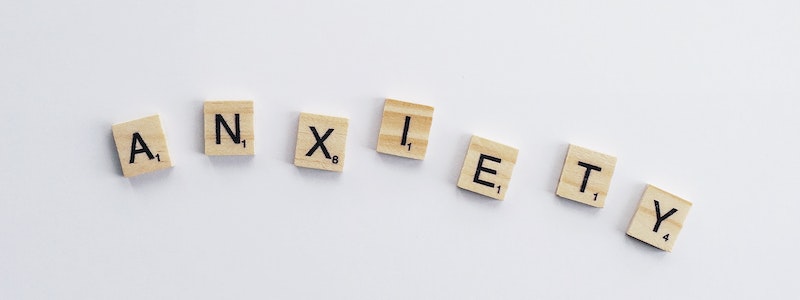
Anxiety is a natural stress response, a common thread in the tapestry of human experiences. However, anxiety can significantly impact our daily lives and well-being when it becomes overwhelming and persistent.
I have suffered varying degrees of anxiety throughout my adult life. At its worst, it has been traumatising and very difficult to live with, but over the years, I have developed a deeper understanding of when, why, and how anxiety affects me.
Understanding anxiety, its signs, symptoms, and effective management strategies have helped me to confront and manage negative feelings of dread and helplessness with resilience and courage. Panic attacks have been far less frequent, and anxiety attacks have become much easier to spot and diffuse at an earlier stage.
I want to share some of the signs, symptoms and strategies I have learned to help others better understand and manage feelings of panic and anxiety:
Recognizing the Signs of Anxiety

For me, the most effective strategy to combat anxiety is recognizing its early signs and addressing them promptly. While anxiety may sometimes feel sudden and overwhelming, there are usually subtle indicators that precede its full onset. By being attuned to these signals, we can initiate proactive measures to mitigate its impact and reduce its intensity.
Common signs of anxiety include:
- Persistent worry or fear about everyday situations or upcoming events.
- Restlessness and irritability make it challenging to concentrate or relax. Including an inability to sleep at night.
- Finding yourself overthinking or over worrying about a situation and unable to get it off your mind.
- Physical symptoms like rapid heartbeat, shortness of breath, or gastrointestinal distress.
These are just some of the common signs, but you may have different early indicators for your own anxiety, which may be more physical or mental. Whenever you feel anxiety make a note of what brought it on and those early feelings, and you’ll soon develop your warning signs to look out for.
Strategies for Management

Recognizing the initial indicators of anxiety and panic gives us the leverage to respond proactively and decisively. With a vigilant eye on these preliminary warning signs, it becomes paramount to equip ourselves with a robust toolkit of strategies and techniques. This arsenal, tailored to counteract the burgeoning sensations of distress, ensures that we’re not merely reactive but prepared and resilient.
There are a multitude of effective techniques for combatting anxieties, among them include:
- Mindfulness and Meditation: Cultivating mindfulness allows individuals to anchor themselves in the present moment. Through meditation, deep breathing, or body scans, anxiety’s grip can loosen as one learns to observe thoughts and emotions non-judgmentally.
- Breathing Exercises: Breathing exercises offer a direct gateway to calming the nervous system. By consciously directing attention to the rhythm and depth of one’s breath, a shift from a state of arousal to relaxation can be achieved. Techniques such as the 4-7-8 method, where one inhales for 4 seconds, holds the breath for 7 seconds and exhales for 8 seconds, can be particularly effective. Concentrating solely on breathing, feeling the rise and fall of the chest or the sensation of air passing through the nostrils acts as an anchor, pulling individuals away from overwhelming thoughts and grounding them in the present moment.
- Cognitive-Behavioural Therapy (CBT): CBT is an evidence-based therapeutic approach that helps identify and reframe negative thought patterns. By challenging irrational beliefs and replacing them with healthier perspectives, individuals can experience reduced anxiety.
- Anti-Anxiety Apps: In the digital age, harnessing technology for mental well-being has become increasingly prevalent and effective. Anti-anxiety apps, such as Rootd and Worry Watch, offer a range of tools designed to assist individuals in reducing anxiety and tackling panic attacks instantly. These apps often incorporate guided meditations, breathing exercises, affirmations, and cognitive-behavioural techniques to provide immediate support at one’s fingertips.
Again, try different techniques to find what works best for you.
Understanding the Symptoms

While it’s important to spot the early signs of anxiety and have an arsenal of tactics and techniques to counter oncoming panic, it’s equally important to understand the symptoms and get to the heart of what commonly triggers anxiety and panic attacks. By better understanding the symptoms, you can make important lifestyle choices that greatly reduce the risk of anxiety and vastly limit its effects on your daily life.
A deeper dive into these symptoms reveals the importance of lifestyle and environment in their manifestation. For instance:
- Diet and Consumption Patterns: A diet replete with high caffeine or sugar intake can exacerbate symptoms. Balance in diet and limiting substances that act as stimulants can be instrumental.
- Lack of quality sleep I can’t stress enough the importance of getting good sleep. Restful slumber rejuvenates the mind and body, fortifying emotional resilience and cognitive clarity. Conversely, sleep deprivation can magnify feelings of stress and unease, making it challenging to cope with daily stressors.
- Environmental Stressors: Our surroundings and daily interactions play a crucial role. A stressful job, turbulent relationships, or even the absence of a calming personal space can be triggers.
- Coping Mechanisms: Unhealthy coping mechanisms, such as smoking, excessive alcohol, or drug use, can amplify anxiety symptoms, creating a vicious cycle.
Understanding anxiety requires a holistic approach. It’s not just about identifying triggers but also about adapting to a lifestyle that fosters mental well-being. Prioritizing self-care, seeking professional guidance, joining support groups, or cultivating a hobby can offer a reprieve. Moreover, sharing experiences, like I am doing now, helps normalise conversations around mental health. It underscores that anxiety is a shared human experience, and it can be managed with the right tools and understanding. Remember, every individual’s journey with anxiety is unique, but the underlying sentiment remains the same: seeking understanding, empowerment, and peace.




